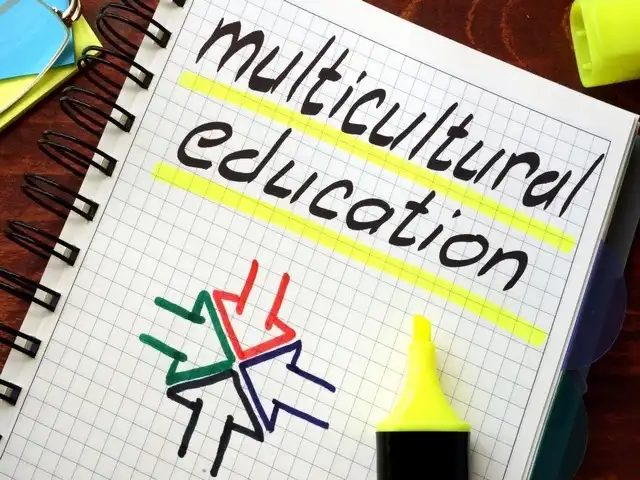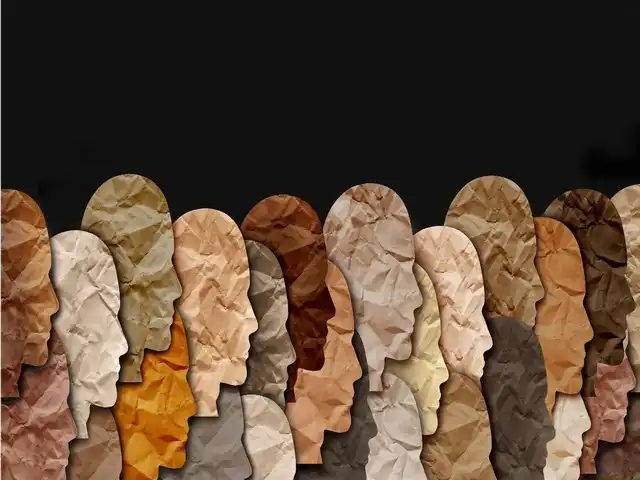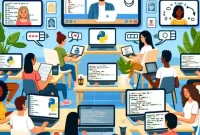Multicultural education is a procedure that aims to understand and appreciate the cultural diversity of society and to create possibilities for college students to develop a sense of belonging.
The term “multiculturalism” has been used in some contexts as an umbrella term for different approaches that involve recognizing, appreciating, and promoting cultural diversity.
What is multicultural education?
Multicultural education is a process of teaching students about cultures and the histories of different groups. It is also an opportunity for students to learn the way to appreciate and understand additional cultures.
Multicultural education is a method to assist students learn more about themselves and others around them, and it helps them develop empathy to better understand different cultures and traditions.
The United States has been a multicultural country since its inception, with people coming from all over the world to live here. The concept of multiculturalism in America was developed in the 1960s, which helped build bridges between different groups who may not have understood each other before.

The benefit from multicultural education
Multicultural education began in the 1960s. It is driven by a desire to understand other cultures and promote understanding, peaceful coexistence, acceptance, integration, and mutual respect among people from different backgrounds.
In one’s daily life, it helps students become proficient at understanding and handling different situations while gaining insight into their environment- cultural or ethnic- with confidence. These skills help students grow as people with a positive outlook on life.
Multicultural education is a significant set of skills that can help you advance your career. Multicultural education provides a rich, diverse, and deep education that will help you learn from others and grow.
Here are some of the benefits from multicultural education:
- Successful multiculturalism doesn’t happen by accident. It requires time and effort for educators, parents, and children alike.
- Multiculturalism will provide a new perspective for global problems. It provides a better understanding of other cultures and people in society to find solutions to these issues within communities rather than through world politics.
- It helps students develop strong critical thinking skills, which are essential for success in today’s world, where knowledge is becoming increasingly more accessible and important in our daily lives.
- Developing cultural awareness increases business confidence and success.
Multicultural education five tips for educators
Educators these days are facing increasing difficulties in educating a diverse and multicultural generation. Even though it can be not easy, there are a few tips for educators to follow:
1) Be mindful of your words and actions.
2) 2) Create a studying environment that is comfortable for all students.
3) Allow students to make mistakes and learn from them instead of making the same mistake twice.
4) Use multimedia content with multiple languages to reach out to more students.
5) Create an atmosphere where everyone feels safe, included, and supported.
Facts on Multicultural Education That You Should Know
It is important to have a diverse workforce in a company, and the company needs to have employees with different cultural backgrounds and ethnicities. The company needs to provide diversity training and educational programs for its employees to achieve this.
According to the Bureau of Labor Statistics, employers are expected to need more than one million new workers with foreign language skills by 2020 and about 400,000 new workers who can speak a second language fluently.
These are five facts on multicultural education that you should know.
- The rise of the “global citizen.”
- The importance of teaching students to become culturally aware
- The need for a diverse workforce in the future
- Teaching students about their own culture and how it could be various from additional cultures
As we continue to live in a global world, one thing is certain: we will need people who can work with others from all over the world, regardless of their cultural background or language they speak.
Promoting Diversity in the Workplace and Accomplishing Your Goals with Today’s Challenges
Diversity is a major factor in today’s workplace. It is important to have a diverse workforce that can adapt to the market’s changing needs and provide different perspectives on issues.
- Diversity is not just about race but also includes gender, age, sexual orientation, and more
- The most important thing to remember when promoting diversity at work is that it isn’t about creating a diverse workforce; it’s about creating an environment where all employees are valued
- Diversity training should start from day one, with all employees being given equal opportunities for success
- Make sure you take the time to listen and understand your employees’ experiences before addressing their concerns
What are the main differences in multicultural education compared to more traditional education?
In today’s world, multiculturalism is a method of living, and it is about celebrating diversity and understanding the differences and similarities between cultures.
A more traditional education system teaches students everything they need to know in one language and then moves on to another language. A multicultural education system teaches students how to learn languages and culture more naturally by having the students experience different cultures at an early age.
The main difference between these two educational systems is that a more traditional education system teaches students everything they need to know in one language and then moves on to another language. At the same time, multicultural education focuses on teaching students how to learn languages and cultures more naturally by having the student experience different cultures at an early age.
What are some of the challenges to teaching and learning a multicultural curriculum?
The challenges to teaching and learning a multicultural curriculum are numerous. This is because the students have different backgrounds and experiences. Teacher needs to understand that their students have different cultural values, norms, beliefs, and practices. They also need to be able to adapt the curriculum so that it is relevant for all learners in the classroom.
This is a difficult task because not everyone has an equal understanding of other cultures or languages, and this means that they may not understand why certain things are important or why they should learn them. In addition, they may be resistant to learning anything new because of their cultural background and beliefs.
Multicultural education programs are faced with a challenge – how to include all students and get them to speak in class or take on leadership roles. Its is made harder by the pressures that globalized culture in the 21st century places on those from different cultures & backgrounds. Teachers need to adapt when students aren’t comfortable speaking up yet and giving their opinions in class discussions.
The most important thing for educators is to remember that this is a lifelong process, and these challenges will always exist in some form or another.
What kind of problems can be solved by multicultural education?
Multicultural education is a way of teaching that focuses on the similarities and differences in cultures. It helps students to understand the diverse groups of people they live with and learn how to work with others from different backgrounds.
The most common problems that multicultural education can solve are educational inequality, cultural identity issues, and intercultural conflicts. It also helps students to become more tolerant towards people of different backgrounds.
What does it mean to have a diverse classroom?
Diversity is a word that is used to describe many different things. It is not just about race, ethnicity, gender, or sexual orientation. Diversity also refers to a variety of other things, including the variety of thoughts and opinions in a classroom and the variety of experiences that students bring with them when they walk into school.
A diverse classroom can be one where students come from different backgrounds and have different opinions on a given topic. A diverse classroom can also mean one where there are many different types of activities going on at once, such as music or dance performances and science experiments happening simultaneously in the same room.
What are some of the most effective approaches to teaching in this type of setting?
In the past, training in-class setting was the most effective method. However, with the advent of technology and more flexible schedules, it is now possible to teach differently.
Who has decided to use a diverse curriculum for their school or class?
A diverse curriculum has students from different backgrounds, experiences, and cultures, and it also includes students with diverse abilities and learning styles. A diverse curriculum is beneficial for a school or class because it increases the level of understanding among the students and allows them to be exposed to various perspectives.
How to Create a Successful Cultural Training Program and Accomplish Your Personal Goals in 4 Simple Steps
This article aims to provide you with a step-by-step guide on how to create a successful cultural training program and accomplish your personal goals in 4 simple steps.
Step 1: Define Your Goals
The first step in creating a successful cultural training program is to define your goals. What do you hope to achieve?
Step 2: Identify the Stakeholders
Next, identify the stakeholders involved in your project. Who are the people who this program will impact?
Step 3: Develop an Action Plan
Now that you have defined your goal and identified the stakeholders, it’s time to develop an action plan for reaching those goals.
Step 4: Implement Your Program
How do students benefit from multicultural education?
By learning about different cultures, students can better understand the world around them, which helps them learn about themselves.
The benefits of multicultural education are enormous. It helps students become more open-minded and empathetic by exposing them to different cultures and people from different backgrounds.
How much has changed in teaching and learning since the early days of multicultural education?
With the increasing diversity of the world, teachers face challenges in teaching and learning. In the early days of multicultural education, teachers faced issues such as teaching children who spoke different languages and had different cultural backgrounds.
In today’s world, we see many more opportunities for multiculturalism in education. It is because technology has made it easier for us to learn from each other and grow together.
Technology has made it easier for us to learn from each other and grow together. With technology, we have access to information from all over the world through various mediums such as online videos, websites, apps, etc. makes it easier for students to gain knowledge on various topics and be exposed to diverse cultures and ideas.
How is multicultural education implemented in the United States?
Multicultural education is a method of training that has been applied in the United States. The target is to teach students about various cultures, and values understand how to work together with people from different backgrounds.
Multicultural education is applied in colleges by integrating various cultures into the curriculum and educating practices in the US. It allows students to better understand their own culture and others worldwide.
Some of the ways multicultural education is implemented in schools include:
- Teaching about cultural traditions such as holidays, festivals, and religious practices
- Teaching about cultural values such as respect for elders and family members
- Teaching about cultural norms like gender roles, sexual orientation, or religious beliefs
How do teachers benefit from multicultural education?
Multicultural education is not just about teaching students about the diversity in the world but also about teaching students to be tolerant and accepting of cultural differences.
Teachers benefit from multicultural education by understanding different cultures better and teaching their students how to be tolerant and accepting of cultural differences.
Teachers can also use multicultural education to connect with their students on a personal level. When they can teach their students about other cultures, they can better relate to them emotionally.
How can we ensure that our children are growing up to be culturally literate?
Parents need to make sure that their children are growing up to be culturally literate, and they should introduce them to different cultures, traditions, and languages.
While the world is becoming increasingly more diverse, children need to have a balanced view of the world, and this will assist them in understanding how other people live and what they value in life.
One way of ensuring that children are growing up to be culturally literate is by introducing them to different cultures, traditions, and languages as early as possible in their childhood.
Conclusion:
Multicultural education is among the essential factors of society. It’s how we teach people from different backgrounds how to interact with one another and every other’s beliefs and values.
Multicultural education faces a crisis because many countries are not teaching children about other cultures to promote tolerance and respect for others.



